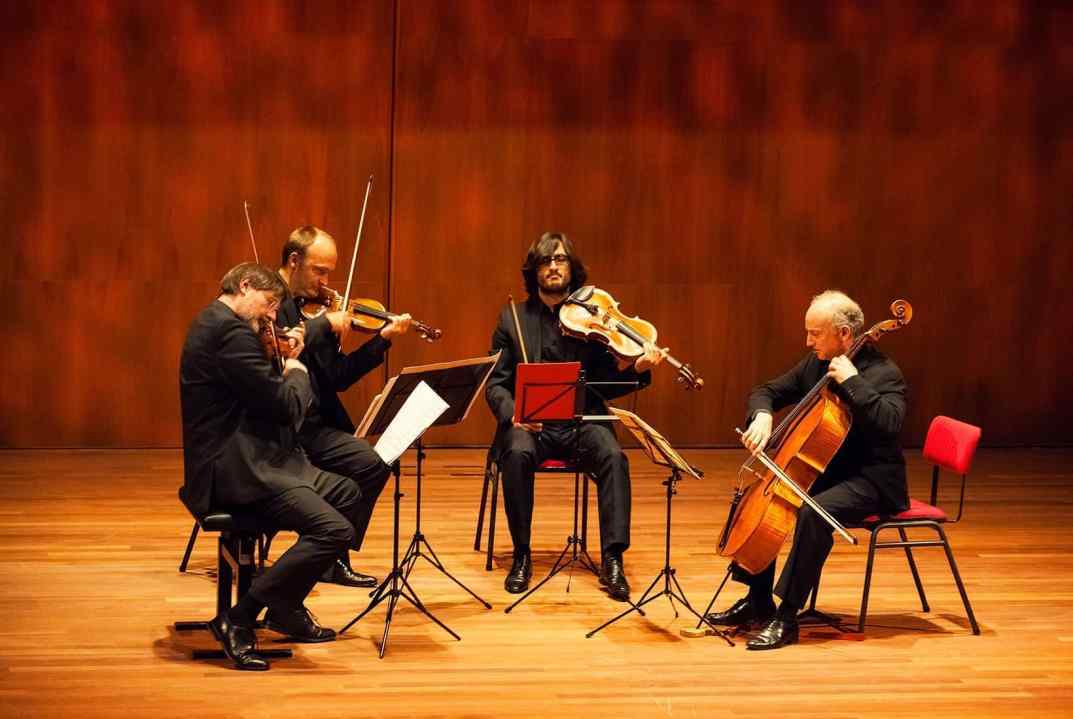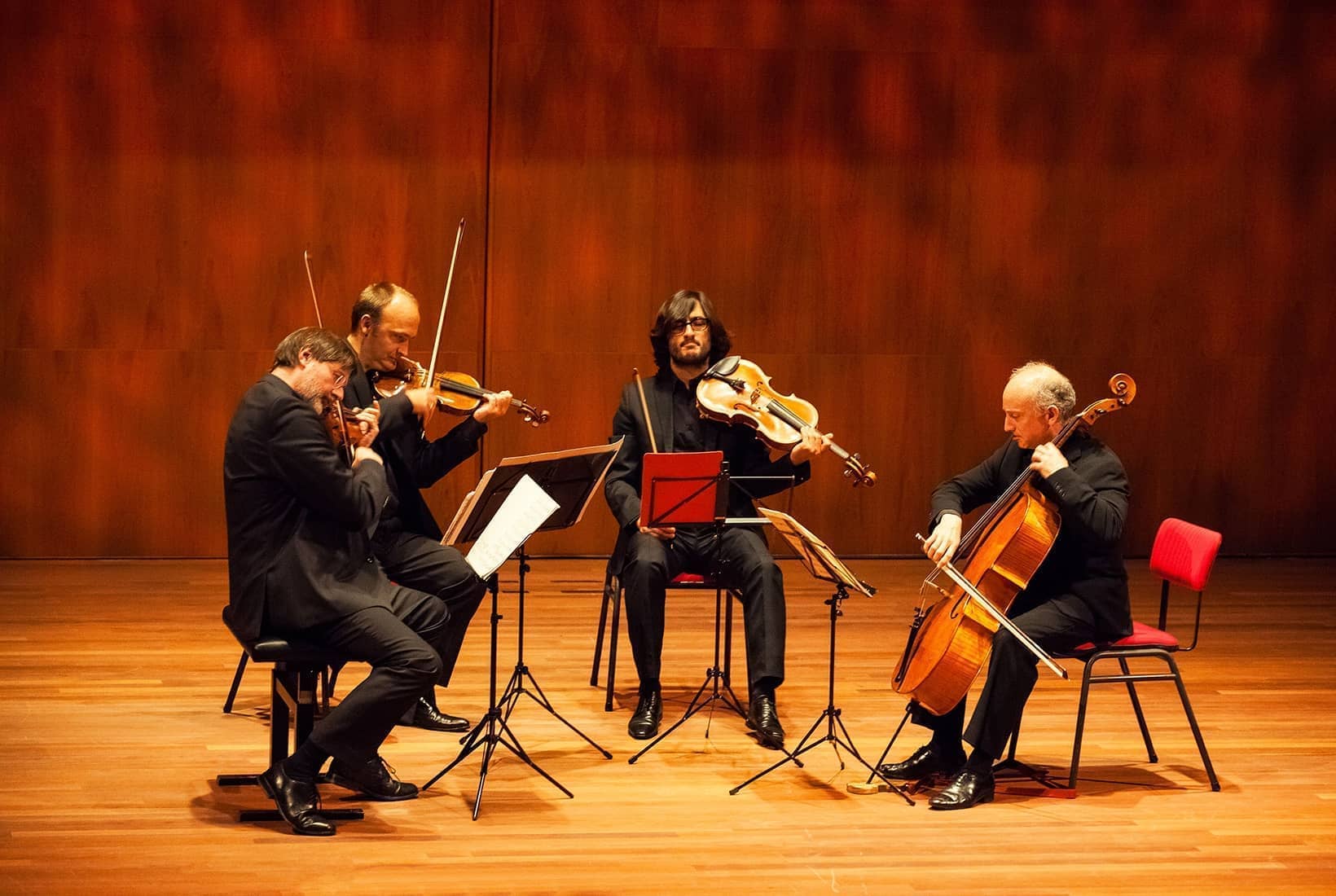‘Drammatico’, wrote César Franck over the opening of his Piano Quintet, and you’d better believe he meant it. The score bulges with clues: piu dolce; espressivo sempre; eventually (and steamiest of all if you’re even slightly attuned to the absinthe-dazed atmosphere of French Wagnerism) tenero ma con passione — ‘tenderly, but with passion’. It was too much for Camille Saint-Saëns, who played the piano in the world première in 1880. The gossip was that Saint-Saëns knew of Franck’s infatuation with the composer Augusta Holmès, and was repulsed by music that — to jealous ears — sounded like the one-handed diary of a 58-year-old lecher. As he reached the final page, with its dedication ‘À mon ami Camille Saint-Saëns’, he stamped from the platform and refused to return. A stagehand swept the score into a wastepaper bin. When Franck published the Quintet a few months later, the dedication stood but the words ‘mon ami’ had been deleted.
There were no inhibitions in Jean-Efflam Bavouzet’s performance at the Wigmore Hall, though the four string players of the Quatuor Danel did their best to preserve some sort of modesty. The Danels have been at the top of the French quartet scene since the 1990s, and they can pivot on a centime from sculpted sensuality to needle-point pointillism. They’d opened with Debussy’s String Quartet, in a performance that sounded at times like it was about to fly apart with the sheer centrifugal force of the group’s tempi. (The leader, Marc Danel, practically fell out of his chair in the final bars.) But the Franck was different — very different, with the Quartet barely clinging on as they rode the foaming, mane-tossing beast of Bavouzet’s piano playing.
The Danels can pivot on a centime from sculpted sensuality to needlepoint pointillism
If you wanted a sonic representation of a once-respectable organ loft composer (Franck’s pupils called him ‘Pater Seraphicus’) trying to maintain classical proprieties while simultaneously hosing his audience down with a jet wash of hormonally charged chromaticism, this one was very definitely Not Safe For Work. The quartet served as ego to Bavouzet’s pianistic id, and there was something enjoyably masochistic about the struggle between the Danels’ tight, quivering ensemble phrasing and Bavouzet’s rampant piano tone. The strings erected dreaming spires: Bavouzet swept them aside with a thunderous carillon. The Danels melted, yearning, into Franck’s sighing motto-melody, while in the background Bavouzet’s left hand stampeded towards them like a mastodon on heat.
This was not a subtle performance, and if the Danels might have done more to make the weather (rather than simply ride the storm), I wished Bavouzet had allowed himself a little more tenderness, too — particularly in the central Lento, where the piano adorns whispered string figures with glinting pearls of sound. Franck marks it dolcissimo; Bavouzet sounded like he was hammering rivets. Still, a live performance can’t be all foreplay and after the final bars — where Franck pounds away at his climactic affirmation triple-forte, and 12 times in a row — the Wigmore Hall audience certainly reacted as if the satisfaction had been mutual. Bavouzet was grinning as he took his bow; the string players looked stunned.
Scottish Opera has returned to the main stage with The Gondoliers, directed by Stuart Maunder and designed by Dick Bird, who did the same company’s Mikado in 2016. That was a riot: a sunburst of visual comedy that used the imagery of music hall and Manga to reverse the show out of the twin dead ends of D’Oyly Carte literalism and Jonathan Miller’s all-too-inimitable 1920s updating at ENO. The Gondoliers doesn’t lend itself to the same kind of reinvention, and Bird’s pretty pastel costumes and Canaletto-inspired sets don’t do much to reinvent it.
But then, they don’t need to. This is one of Sullivan’s most expansive scores, and Gilbert’s libretto doesn’t really spiral off into outright absurdity until Act Two where — with the great Richard Suart pattering for England as a decrepit Duke of Plaza-Toro, Ben McAteer purring with malice as the Grand Inquisitor and Yvonne Howard (the Duchess) manoeuvring a colossal set of panniers — the comic beats landed swiftly and lightly. The younger characters are thoroughly up for it too. As the gondoliers Marco and Giuseppe, William Morgan and Mark Nathan sing handsomely and dance well, ending each duet with a playful double entrechat that can’t possibly be as easy as they make it look.
In fact, it’s a regular song and dance show, with Maunder using Sullivan’s tarantellas and fandangos to fill the stage with spirited choreography and swirling dresses. So when Luiz (Dan Shelvey) and Casilda (Catriona Hewitson, sounding radiant in a piratical eyepatch) have their brief Act One duet, it creates just enough stillness and sincerity to make Gilbert’s final plot twist warm the heart as well as tickle the wit. Finding that balance is half the battle with comic opera, and Scottish Opera nails it.






Comments